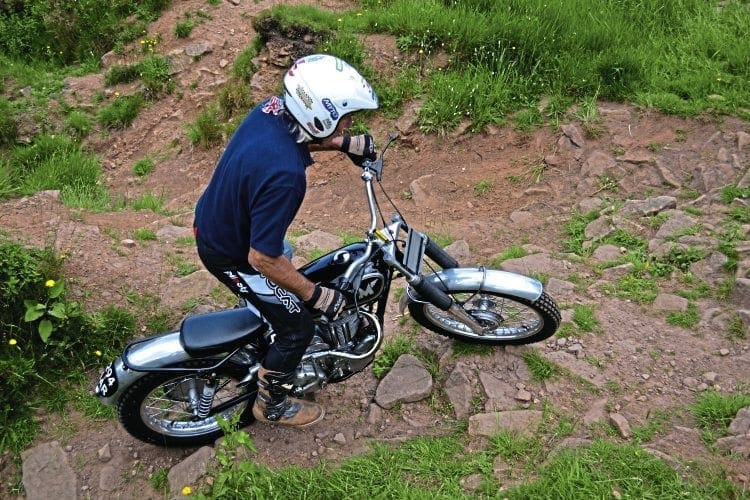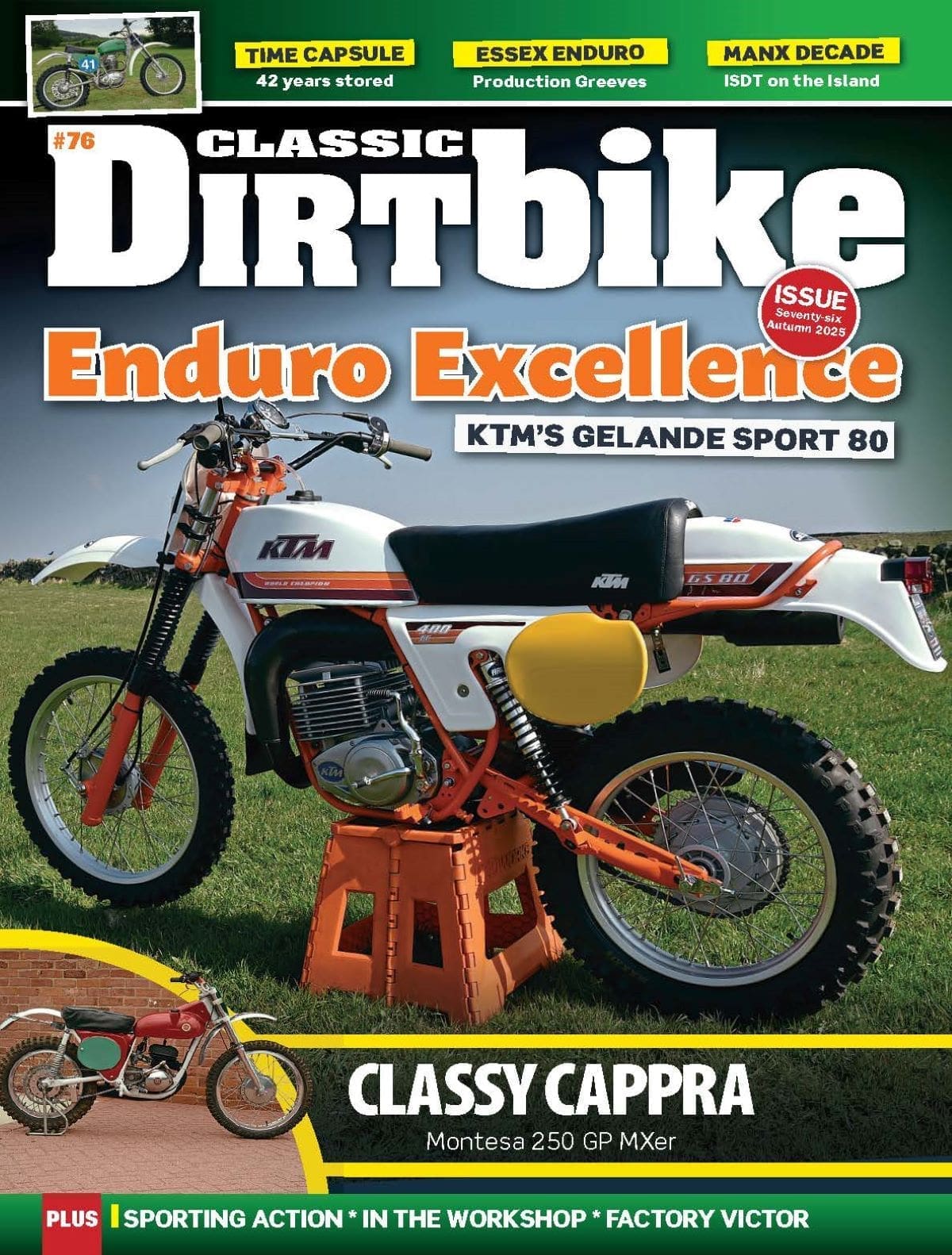You probably don’t realise it, but a big four-stroke single is what you need in your life right now and the AMC versionis pretty damned handsome.
Surely everyone must know the story of how the upstart lightweight bikes came along in the Sixties and knocked the big bangers off their seemingly unassailable perches? Yes? No?
Well, it wasn’t quite like that as the smaller bikes had been there and thereabouts for a few years, and in the end it was the foreigners who did it for all the British machines and relegated them to the sheds and outhouses before the pre-65 movement took hold.
Enjoy more Classic Dirt Bike Magazine reading.
Click here to subscribe & save.
Nor indeed were the riders of the bigger bikes blind to the need to carve an ounce or two off their machines, and Gordon Jackson’s legendary 187 BLF SSDT winning 350 AJS was reckoned to be, at 225lb, lighter than a C15 BSA.

When someone builds a bike to use in pre-65 trials, it is rarely a catalogue correct model. In actual fact, to ride a catalogue correct bike in modern pre-65 trials would be an achievement in itself.
Rather it is the works machines which are looked at, which is all well and good, but even in the day not everyone could handle works machines.
There is a famous tale of one trials superstar trying Gordon Jackson’s super trick short stroke bike and declaring it ‘unrideable’, yet Jackson won on it. Hand-built for the Kentish lad’s style, AMC realised few riders had Jackson’s skill and instead carried on with the long stroke model.

In AMC’s defence, even other members of the works team preferred the older, long stroke bike, and when 187 BLF went to Gordon Blakeway as his works bike, AMC had settled on using the older barrel overbored to take the short stroke piston to make a 410cc machine – most of the AMC trials bikes were 350cc.
The one in our feature is a 410, owned and built by Peter Lockwood and pictured at a test day with Mick Andrews.
It displays many of the classic works tweaks which AMC sanctioned for Jackson, such as central alloy oil tank mounted between the rear engine plates, alloy brake plates, lighter sub-frame and high-level exhaust, along with alloy wheel rims.

Peter’s bike wears a conical air filter where AMC used a rubber sheet to cover the carb mouth as they felt a filter could become clogged and spoil the carburation.
Peter has also mounted his footrests much further back than would have been the norm in the Sixties and in order to have maximum kick-starter movement a modern cranked one has been fitted.
If you’ve never ridden a well sorted big single, then make friends with someone who has one, beg a ride on one or somehow contrive to sling your leg over the saddle of a traditional machine.

Then, back the throttle off, let it plonk and I’d be surprised if you didn’t agree you need one in your life.
Checking it out
Peter’s bike is a nice tribute to the works riders of the day and in Mick Andrews we have a works rider of the day who was part of the AMC team with Jackson, and remembers his bike well.

Mick was keen to put Peter’s bike through its paces and jumped on it and looked as if he’d always been riding it… as he had with the Yamaha, two OSSAs and a 325 Sherpa earlier.
Taking the Matchless round his test sections, Mick was soon back suggesting a few little tweaks and adjusting the carburation.


How it’s done
Making a 350 into a 410 just needs a few parts and Don Morley’s excellent book Classic British Trials Bikes goes into greater detail than there is room for here.
Basically, the short stroke model’s piston is fitted into the old long stroke barrel and hey presto – a 410. Don also detailed how to build your own short stroke 350 using the last AMC Norton-based engines.


He said at the time that the short stroke would be more difficult to ride but I suspect modern tyres would go a long way to combatting the bugbear of the short stroke… too much power to find grip unless you have the throttle control of a Jackson.
Read more News and Features online at www.classicdirtbike.com and in the latest issue of Classic Dirt Bike – on sale now!



